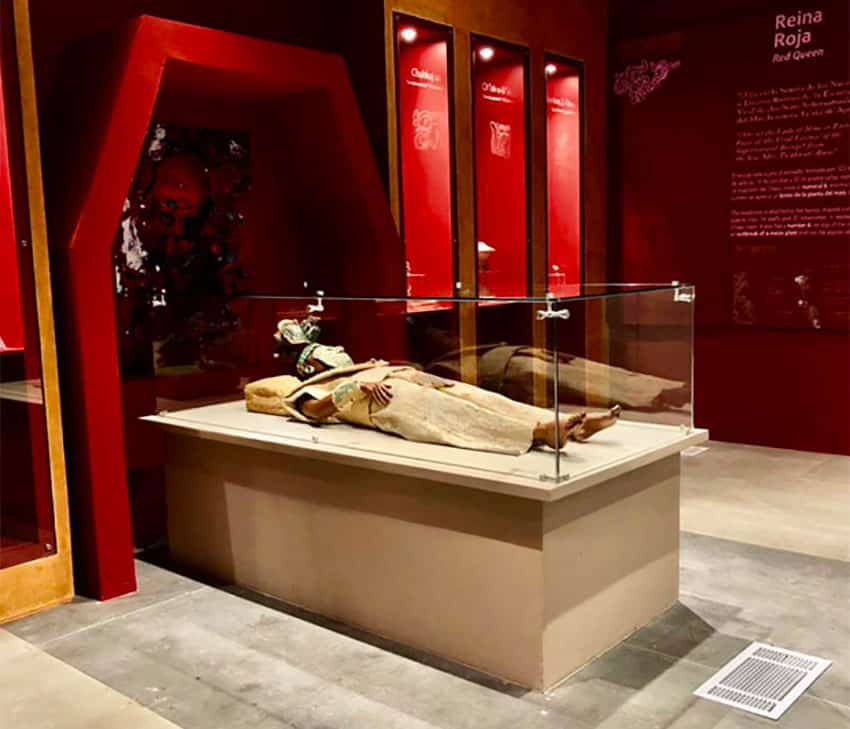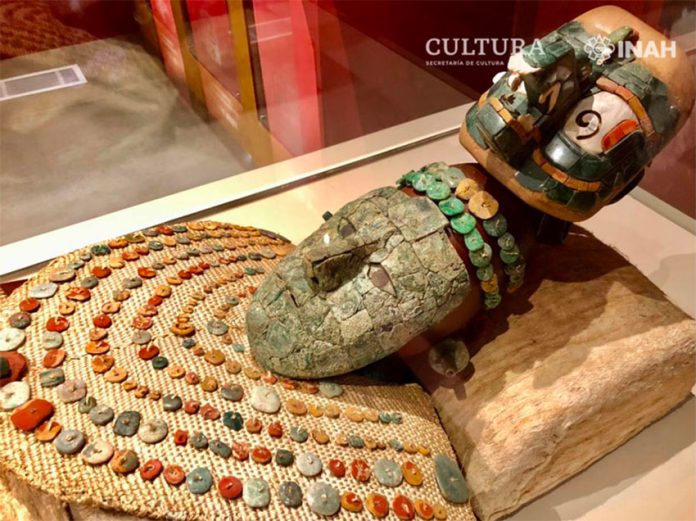The Red Queen of Palenque, a 7th-century Mayan ruler’s wife whose remains were discovered in 1994, has a new resting place in the museum adjacent to the Palenque archaeological site in Chiapas.
The Pabellón Reina Roja, or Red Queen Pavilion, was officially opened by President López Obrador on Sunday.
Speaking at the event, Culture Minister Alejandra Frausto said that people will be able to visit and admire the Red Queen in her native land at the new facility.
“We’ve come to open again the home of the Red Queen Ixik Tz’aka’ab Ajaw [Lady Ruler of Generations], the queen who will be an ancestral symbol for contemporary women as she was in her time for the Mayan culture,” she said.
“The Red Queen will be an inspiration and symbol for girls, adolescents and Mayan women of today” as well as all other Mexican women, Frausto said.

“… The Red Queen is in her home, may she remain here and may people know her and learn about her culture through her,” the minister said.
The stone sarcophagus of the Red Queen – consort of Pakal the Great, a ruler of the Palenque city state – was found in 1994 by Fanny López Jiménez and other National Institute of Anthropology and History archaeologists. The woman was dubbed the Red Queen because her remains and other objects in the sarcophagus were covered with bright red cinnabar powder.
The Red Queen is believed to have died in A.D. 672, 11 years before Pakal, who was ajaw – ruler or king – from 615 until his death in 683. Her remains had been deposited in a subsection of Temple XIII, located next to the Temple of the Inscriptions, where Pakal the Great’s tomb was discovered by the archaeologist Alberto Ruz Lhuillier in 1952.
Interred with the queen was an elaborate headdress and a 116-piece mask, among other items. Made of 110 pieces of malachite, two of obsidian and four of white jade, the strikingly realistic mask was partially placed over the face of the deceased queen prior to her burial.
A garment worn by Mayan royalty known as a k´ub covered the queen’s chest and shoulders. It was decorated with more than 170 small discs of jade, omphacite and albite and also featured a small rosette and miniature carving of a monkey’s head.
Entrance to the Red Queen Pavilion and the rest of the Alberto Ruz Lhuillier Museum is included in the price of a ticket to visit the Palenque archaeological site, one of Mexico’s most impressive pre-Hispanic cities. The site is about eight kilometers outside the city of Palenque, located in the northeast of Chiapas.
Mexico News Daily
